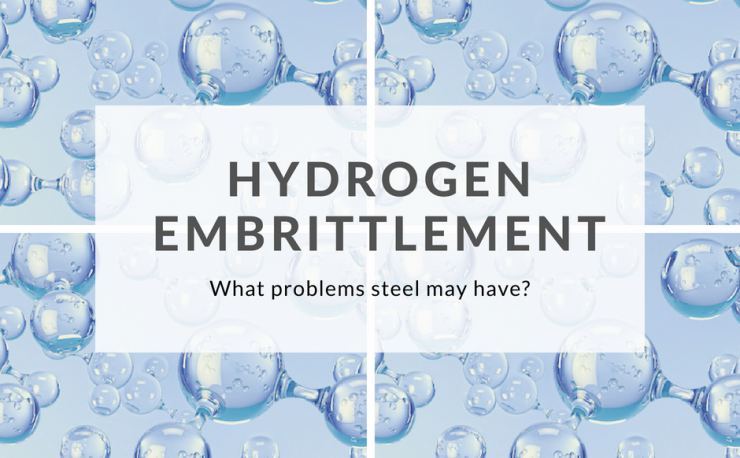
In today’s post we want to talk about the hydrogen embrittlement. This chemical-physical process, in fact, affects different metals. These include right steels, more specifically those with high-resistance.
How the hydrogen embrittlement take place?
This type of process is the result of the “undesirable” introduction of hydrogen within the steel which can take place during
- forming processes
- finish machining.
This mechanism is triggered when hydrogen atoms diffuse into metal blocks. What conditions should be there?
Hydrogen diffuses into the metal in different ways as
- high temperature (the spread is due to the high solubility of hydrogen)
- low temperature (requires the presence of a concentration gradient).
The hydrogen atoms recombine into mini-cavity of the metal structure, to form hydrogen diatomic molecules. The latter are able to generate a pressure from inside the cavity that gives the metal both ductility and a reduced tensile strength. Thus originate cracks.
What are the processes that can lead to embrittlement?
The hydrogen embrittlement can occur as a result of various processes such as
- cathodic protection
- phosphating
- chemical pickling
- galvanisation
- galvanic corrosion
- chemical reaction of metals with acids or with other reagents.
What problems do arise?
As mentioned above, hydrogen embrittlement leads to increased formation of cracks in metal material, in this case in steel. Making the latter brittle and susceptible to fracture. High-strength steels and low alloy ones (no elements above 5%) are those most susceptible to this phenomenon. Those with a tensile strength less than 1000 MPa or with an hardness less than 30 HRC (Hardness Rockwell Cone) are not susceptible to this process. The results of hardness tests carried out by Jewett on stainless steels have shown that those austenitics have been free from hydrogen embrittlement. Another problem that can occur is that of “attack of hydrogen“.
But how does it work? If the steel is exposed to hydrogen at high temperatures, the latter will spread in the league, combining with the carbon. Just along the inner surfaces (as grain and cavity walls), then, will form mini-pockets of methane that will settle into the cavities, helping the formation of cracks. This process of “selective corrosion” cause decarbonization of steel that will lose ductility and resistance.
How to remedy the hydrogen embrittlement?
If there is no cracks, the process of embrittlement can be retrieved. How do you do? Hydrogen source must be removed, so that the latter can spread out from the metal. If we talk about welding of high-resistance and low-alloys steels, instead, it is necessary to preheat and post heat the metal to allow the escape of hydrogen before it can affect the material.
Looking for stainless steel fasteners, fittings, marine hardwares or fasteners for photovoltaic systems? Visit our website. Sign in on our webshop to show real-time prices and availabilities of products.
Click hereRead more, here.




